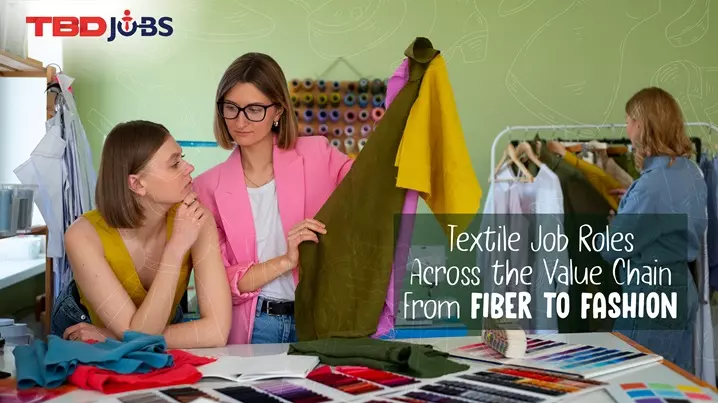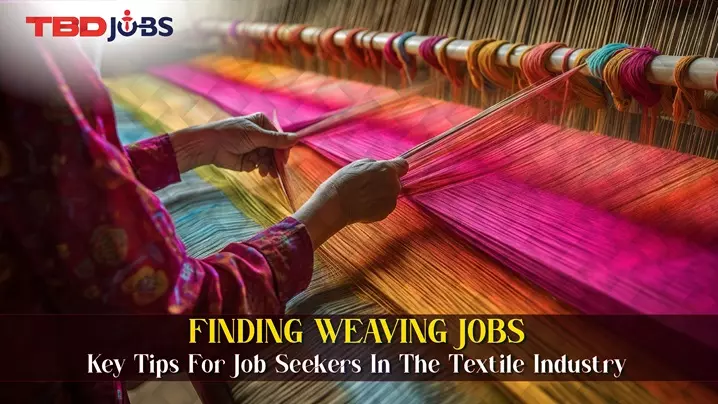In the ever-changing world of style, what remains constant is the quiet revolution that occurs behind backdrops. Unseen unsung heroes are textile engineers who continuously push boundaries on what is possible in both the design and production of fabrics. Examples include such sustainable materials as smart textiles, which shape the future of what we wear.
The Exciting World of Textile Engineering: Transforming the Fashion Landscape
The Role of Textile Engineers in Fashion Innovation
Textile engineers specialise in designing new materials and altering already known ones to respond to the ever-changing demands of the fashion world. They incorporate technology into fabrics to increase durability, comfort, sustainability, and appeal. Engineers work behind the scenes to deliver all this because consumers demand more from clothing: wrinkle-free suits, UV-resistant swimwear, or biodegradable fabrics.
Style brands are now flaunting advanced textile technologies for water-resistant garments that stretch, are antimicrobial, and even regulate temperature. That great combination of science and fashion innovates how people experience apparel, showing that textile engineers lead apparel innovations forward.
Generations of Textile Engineers: A Legacy of Progress
Each successive generation of textile engineers has contributed to the industry's growth for it to be sustainable. The early days focused on developing natural fibers like cotton, wool, and silk. At the same time, synthetic materials such as polyester, nylon, and spandex later transformed fashion from there by making the fabrics versatile in many ways.
Fast forward to today, with engineers working on solutions that include smart textiles and fabrics embedded with sensors monitoring health conditions or tracking physical activity. Another rapidly emerging trend is the range of bio-based fibers developed to minimise environmental impact. In turn, all these innovations have come from the centuries-long continuous research and experimentation by textile engineers.
The new generation of engineers tackling environmental sustainability, circular fashion, and a good percent portion of fast fashion waste is now the new generation of engineers.
The Indian textiles sector is growing well in producing eco-friendly fabrics, making Indian engineers pioneers in finding novel ways to innovate about sustainability.
Apparatus Innovations in Apparel: Where Technology Meets Creativity
The innovative fabric is a new frontier of apparel, and engineers are at the center of these changes.
Some of the revolutionary creations include:
-
Sustainable Textiles: Engineers collaborate with organic and recycled materials to produce fabrics like recycled polyester from plastic bottles or fabrics from agriculture waste.
-
Performance Fabrics: High-tech apparel, such as moisture-wicking sportswear, is on the rise, and engineers ensure that the garments provide both comfort and performance.
-
Smart Wearables: Witness the new definition of user experience in wearable technology jackets with integral heaters to yoga pants with posture-correcting sensors. Engineers blend function with fashion to develop these innovative solutions.
-
Circular Fashion: Engineers now design methods for recycling old garments into new fabrics, thereby minimising textile waste and encouraging sustainable fashion.
These innovations redefine what style and functionality mean, showing that engineering can create changes within the fabric of fashion.
Indian Textiles: The Beacon of Innovation
It is no secret that the country has maintained one of the most advanced textile heritages. However, more exciting now is that, with technological advancements in the industry, the sector has reached worldwide leadership positions in producing sustainable and innovative fabrics. India has created breakthroughs in organic cotton, herbal-dyed fabrics, and handloom products with a modern twist.
This makes Indian textiles unique, combining traditional craftsmanship with engineering expertise. Also, with India focusing on sustainable practices, there is convergence in the global movement towards green fashion. Indians are also researching making leather from plants and biodegradable synthetics, two more ways innovation is being pushed.
This mix of traditions with technology has made India a place for innovations in attire. Most brands think about coming out with apparel in collaboration with home engineers.
Careers in Textile Engineering: Development and Career Prospect
A career in textile engineering can open up huge opportunities for people working in several industries. From apparel to the health sector, sports gear to automobiles, the versatility of a textile engineer is enormous, as their application doesn't end here.
Some of the most lucrative and sought-after careers include:
A fabric engineer creates speciality textiles, which are incorporated to create fire and water resistance; fabric engineers also have a lot to do with fashion and technical textiles.
-
R&D Engineer: R&D engineers explore new fibers, analyse material properties, and pattern fabrics to create an industrial demand for a product.
-
Sustainability Consultant: Sustainability is becoming the need of the hour and drives engineers within the fashion industry to help minimize waste for the most part, use the most environment-friendly materials, and adopt the principle of circular fashion models.
-
Quality Control Specialist: For performance and luxury wear-oriented companies, clothes must have quality standards.
-
Production Manager: Textile engineers manage the overall textile production processes, from source acquisition of raw materials to product delivery.
Because the textile industry is global, exciting careers are waiting for professionals who have engineering and fashion experience. Companies are looking for experienced textile engineers who push innovative developments to meet changing expectations from consumers.
The Role of TBD Jobs in Empowering Textile Careers
TBD Jobs supports the career development of aspiring textile engineers and professional workers looking for more fulfilling careers. Our website links various candidates with popular companies within the textile industry for jobs in research, production, and sustainable fashion sectors.
You can be a textile engineer or look for Indian textile job opportunities. We have all the job listings you require for the perfect fit.
With such global demands for innovation and sustainability, the need for professional textile engineers is at its highest. If you are passionate about impacting the fashion world, watch for the latest job openings on TBD Jobs and start building an exciting and impactful career.
Conclusion
Textile engineers are at the forefront of reshaping the fashion industry. From sustainable fabrics to smart textiles, solutions meet modern demands and evolve responsibly for the environment. It is, therefore, an even stronger platform set up by generations of engineers and probably has far greater potential in the future just as innovation keeps coming through.
Now is a great time for individuals who wish to be involved in textile engineering. If you have the skill and passion, join a movement that seamlessly weaves fashion, technology, and sustainability together. Check out the careers available on TBD Jobs.
The textile industry is changing, and with efforts from the combined contributions of fabric engineers and industry leaders, the future of fashion looks brighter and more innovative than ever.












.webp)













Leave a Comment
2 Comments
01 Oct 2025, 02:56 PM
17 Oct 2025, 03:48 PM